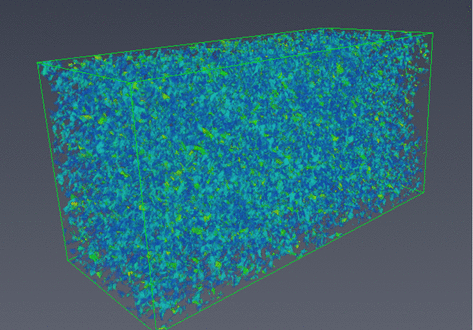Thermo Fisher Scientific › Electron Microscopy › Electron Microscopes › 3D Visualization, Analysis and EM Software › Use Case Gallery

The development of focused ion beam-scanning electron microscopy (FIB-SEM) techniques has allowed high-resolution 3D imaging of nanometre-scale porous materials. These systems are of important interest to the oil and gas sector, as well as for the safe long-term storage of carbon and nuclear waste. This work focuses on validating the accurate representation of sample pore space in FIB-SEM-reconstructed volumes and the predicted permeability of these systems from subsequent single-phase flow simulations using a highly homogeneous nanometre-scale, mesoporous (2–50 nm) to macroporous (>50 nm), porous ceramic in initial developments for digital rock physics. The limited volume of investigation available from FIB-SEM has precluded direct quantitative validation of petrophysical parameters estimated from such studies on rock samples due to sample heterogeneity, large variations in recorded sample pore sizes and lack of pore connectivity. By using homogeneous synthetic ceramic samples we have shown that lattice-Boltzmann flow simulations using processed FIB-SEM images are capable of predicting the permeability of a homogeneous material dominated by 10–100 nanometre-scale pores (similar, albeit simpler, to those in natural samples) at the much larger scale where permeability measurements become practical. This result shows the LB flow simulations can be used with confidence in pores at this scale allowing future work to focus on sample preparation techniques for samples sensitive to drying and multiple FIB-SEM site selection for the population of larger-scale models for heterogeneous systems.
For Research Use Only. Not for use in diagnostic procedures.